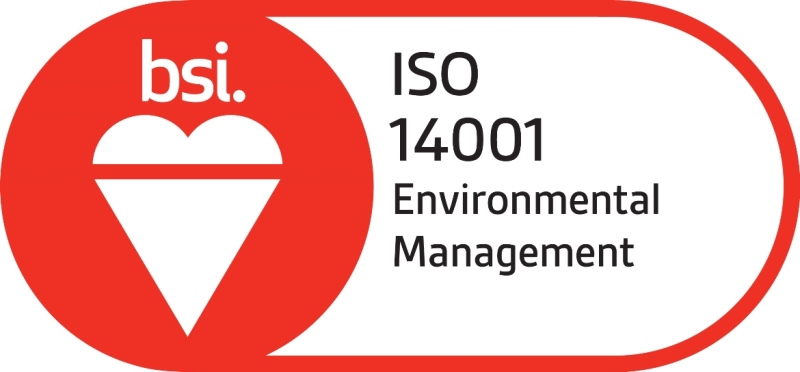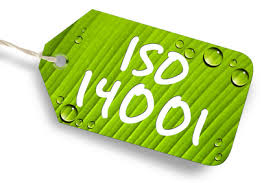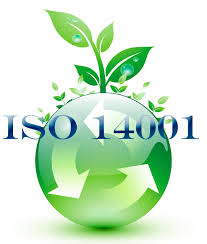
Contents
ISO 14001
What is an environmental management system ?
An environmental management system helps organizations identify, manage,monitor and control their environmental issues in a “ holistic ” manner. Other ISO standards that look at different types of management systems, such as ISO 9001 for quality management and ISO 45001 for occupational health and safety, all use a High- Level Structure.This means that ISO 14001 can be integrated easily into any existing ISO management system.
ISO 14001 is suitable for organizations of all types and sizes, be they private, not-for-profit or governmental. It requires that an organization considers all environmental issues relevant to its operations, such as air pollution, water and sewage issues, waste management, soil contamination, climate change mitigation and adaptation, and resource use and efficiency.
Like all ISO management system standards, ISO 14001 includes the need for continual improvement of an organization’s systems and approach to environmental concerns. The standard has recently been revised, with key improvements such as the increased prominence of environmental management within the organization’s strategic planning processes, greater input from leadership and a stronger commitment to proactive initiatives that boost environmental performance.
What benefits will it bring to my business or organization ?
There are many reasons why an organization should take a strategic approach to improving its environmental performance. Users of the standard have reported that ISO 14001 helps :
- Demonstrate compliance with current and future statutory and regulatory requirements.
- Increase leadership involvement and engagement of employees.
- Improve company reputation &the confidence of stakeholders through strategic communication.
- Achieve strategic business aims by incorporating environmental issues into business management
- Provide a competitive and financial advantage through improved efficiency and reduced costs.
- Encourage better environmental performance of suppliers by integrating them into the organization’s business systems.
Benefits to your customers:
- Reassures customers who take an active interest in environmental performance that they are working with a company which promotes a shared environmental etho.
- Proof that you are maintaining a forward thinking, environmentally aware organization that fulfills its corporate social responsibility.
Benefits to your staff:
-
Increase the motivation of your environmentally conscious employees
-
Increase environmental awareness among the entire workforce
-
Actively reduces environmental risks and prevents incidents to both employees and the local environment
Why was ISO 14001 revised?
All ISO standards are reviewed every five years to establish if a revision is required in order to keep it current and relevant for the marketplace. ISO 14001:2015 is designed to respond to latest trends and ensure it is compatible with other management system standards.
What are the main changes to the standard?
The key changes relate to:
- Increased prominence of environmental management within the organization’s strategic planning processes.
- Greater focus on leadership.
- Addition of proactive initiatives to protect the environment from harm and degradation, such as sustainable resource use and climate change mitigation.
- Improving environmental performance added.
- Life cycle thinking when considering environmental aspects.
- Addition of a communications strategy
Environmental aspects audit checklist (Applied for ISO 14000):
1. What evidence exists that the organization has established, implemented and maintains (a) procedure(s) to identify the environmental aspects of its activities, products or services within the defined scope of the environmental management system that it can control and those that it can influence taking into account planned or new developments, or new modified activities, products and services and determined those aspects that have or can have a significant impact(s) on the environment (i.e. significant environmental aspects)?
2. Does the decision making process take into consideration inputs and outputs, normal and abnormal operating conditions, start ups and shut downs, actual influences, potential influences and potential emergency situations, as well as those that are beneficial to the environment?
3. Does the decision making process take into consideration the amount of control and influence the organization have over its aspects?
4. How/when are aspects reviewed and maintained; changes to processes, changes to regulations, introduction of new raw materials?
5. Does the documentation reflect this change?
6. Where is this information documented and is it kept up to date?
7. Where has the organization identified environmental aspects for its operations, products and services? What was the process that was used?
8. Who was involved in determining aspects?
9. Were air emissions, possible ground and surface water contamination, landfill issues, use of natural resources, raw materials and energy considered as well as community issues such as noise, traffic, and odor?
10. Are current, planned and modified activities considered?
11. Look for potential aspects that have not been taken into consideration and ask why they were not considered. How are significant environmental aspects determined? What criteria are used?
Objectives, targets and programs audit checklist (Applied for ISO 14000)
1. Has the organization established, implemented and does it maintain documented environmental objectives and targets, at each relevant function and level within the organization?
2. Look for documented environmental objectives and targets.
3. How does the organization ensure that employees on all levels are aware of objectives and targets?
4. Speak with employees on all levels to determine if they are aware of objectives and targets.
5. How does the organization develop objectives and targets? Who is responsible for developing them?
6. What types of things were taken into consideration during development? Were reducing the creation of waste, reducing the release of specific elements to the air, reducing ground water contamination, reducing use of raw materials by reducing rework and scrap, taken into consideration? Was promoting awareness within the organization and the surrounding community considered?
7. Do the objectives and targets reflect the vision of the EMS policy? Are they consistent with the policy?
8. Do they include commitments to the prevention of pollution and compliance with applicable rules, requirements and regulations?
9. Have measurable targets been defined? If not, why not?
10. Are targets both short and long term?
11. How are the objectives and targets maintained? Who is responsible for maintaining them?
12. Objectives, targets and programs – Are the objectives and targets measurable, where practical, and consistent with the environmental policy, including the commitments to prevention of pollution, to compliance with applicable legal requirements and with other requirements to which the organization subscribes, and to continual improvement?
13. When establishing and reviewing its objectives and targets, does the organization take into account the legal requirements and other requirements to which the organization subscribes, and its significant environmental aspects? Does the organization also consider its technological options, its financial, operational and business requirements, and the views of interested parties?
14. What factors does the organization consider in setting objectives and targets? How are significant impacts considered?
15. Look at plans. Is there one for every objective and target? What happens when something doesn’t go according to plan? Is corrective action taken?
16. How is management kept informed of the progress towards the targets? How are employees informed of the progress towards the targets?
17. Look for graphs, information in newsletters, meeting minutes, and posters. How does the organization plan to achieve objectives and targets?

18. Have responsibilities been defined?
19. Have time lines been defined?
20. How is progress monitored? Is it measurable?
21. What has been included in the development of the plan?
22. How are resources obtained?
23. Are legal and other requirements, available technology, financial, operational and business requirements considered? Were interested parties involved in the development of objectives? If so, how?
24. How were objectives developed? Who participated in their development?
25. Has the organization established, implemented and does it maintain a program(s) for achieving its objectives and targets, including designation of responsibility for achieving objectives and targets at each relevant function and level of the organization and the means and time-frame by which they are to be achieved?
26. What plans have been developed to achieve objectives and targets?
27. Do plans include responsibility for achieving the objectives and targets?
28. Do plans reflect objectives and targets at lower levels of the organization?
29. Does the plan include its own targets and timelines for reaching them?
Audit checklist of Legal and other requirements (Applied for ISO 14000)
1. Has the organization established, implemented and do they maintain a procedure(s) to identify and have access to the applicable legal requirements and other requirements to which the organization subscribes, related to its environmental aspects and determined how these requirements apply to its environmental aspects?
2. Is there a list of applicable rules and regulations?
3. Who is responsible for keeping this information updated and current? Does the list include any voluntary standards?
4. How does the organization ensure it is complying with these regulations?
5. Speak with people in the organization to determine if they are aware of any regulations.
6. Did the organization consider national, international, state and local rules and regulations?
7. Does the organization have any agreements with public authorities, or with customers?
8. Do they subscribe to any voluntary guidelines or industry practices such as Responsible Care?
9. What process does the organization have for reviewing requirements to make sure they are current in the face of changing processes and business requirements?
10. Do regulations include such things as Federal Title V or Synthetic Minor, State Emissions Inventory and Permit Fee?
11. What is the procedure regarding this requirement?
12. How does the organization know what regulations and requirements they may be subject to?
13. Do they subscribe to industry newsletters or websites? Do they have a third party environmental service monitor regulations for them and alert them as to any changes?
14. Has the organization ensured that these applicable legal requirements and other requirements to which the organization subscribes are taken into account in establishing, implementing and maintaining its environmental management system?
15. Check the organization’s objective and targets to determine if requirements are included.
16. Was the selection of significant aspects based partially on applicable legal requirements and other requirements?
These are some procedures of ISO 14000 as follows:
1. Procedure for nonconformity solving & corrective and preventative actions a. All the staff when noticing any nonconformity must make a report and send it to the head of division or the board representative. Non conformity such as:
- Nonconformity with the work procedure and work guide.
- Nonconformity with goal and objective.
- Unexpected situations that negatively affect the environment.

- Soil, air, and water pollution that is uncontrollable.
- Accidents.
- Non conformities in the evaluation process of manager.
2. Procedure for monitoring & measurement
4.1. Make the plan of monitoring and measurement
• The objective of this plan is to assure that:
- Examine all activities significantly relating to environment
- Supervise the process of goal and task implementation.
- Evaluate the conformance with legal and other requirements.
• After identifying the significant environmental aspects, EPD will work with the heads of producing sectors to create and execute the plan of monitoring and measurement.
3. Procedure for identifying environmental aspects & effects.
4.1. The order for identifying the environmental aspects: The heads of divisions are responsible for identifying the aspects, following the steps mentioned in the enclosed form.
- List all the work that their divisions are responsible, based on considering the input and output of the work, product or service.
- As for each work, product or service, the manager must classify different situations: normal, unnormal or urgent.
- Procedure for responding to urgent situation.
4. Procedure content:
- First, EPD will identify significant environmental aspect requirements to prepare for urgent situation.
- Heads of divisions prepare emergency plan by approaching and evaluating these aspects. The evaluation result will be reported to the EPD.
- EPD then will collect information and consider the confidence and emergency level of each situation to decide whether or not the company will need to provide with suitable resources.
5. Procedure for setting goal, target and environment management program
4.2. Setting environment goals and targets. Remember to consider the following when setting goals:
- Must be suitable with the environment policy, including the agreement on pollution prevention.
- Abide by legal and other requirements.
- Must mention the significant environmental aspects.
- Must be suitable with technology ability, requirements of business and finance activities.
- Opinions of concerned parties.
- Meet the company regulations (if have).
6. Procedure for identifying legal and other requirements
4.1. The board representative needs to set up relationship with environment and health safety organizations to update new environment requirements so that the environment management activity of the company is always effective and suitable.
4.2. Administration division collects, analyses and documents information appropriately and in time for the environment management project.
7. Regulation for saving resources Electricity saving:
1. Everyone must know that electricity is necessary and must follow this saving.
2. The machines and facility of the company must be used properly as specified, turn off when not using.
3. Stick notes reminding of turning off light, fan, air conditioner or setting automatic mode at suitable place.
4. Equip a thermometer in room with air conditioner and never let temperature (in room) too high or low.
Click below to download the ISO audit check sheet and requirement
